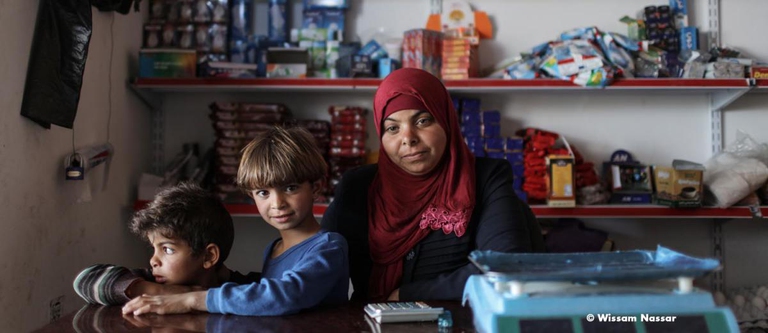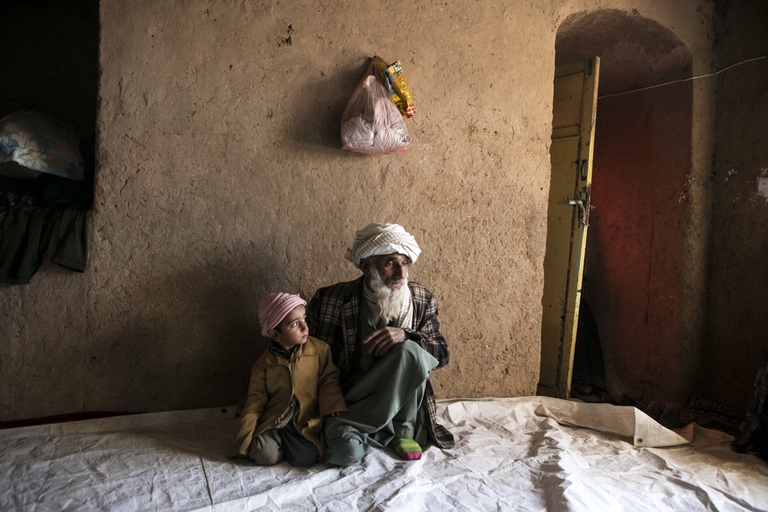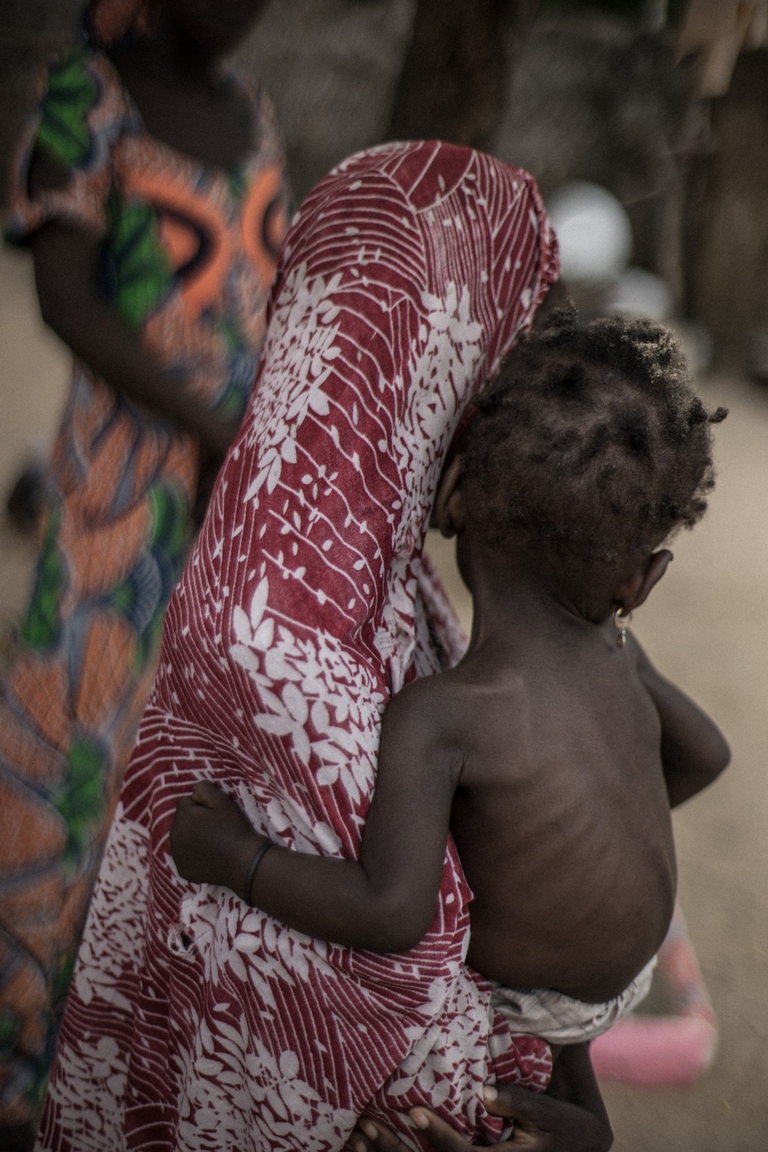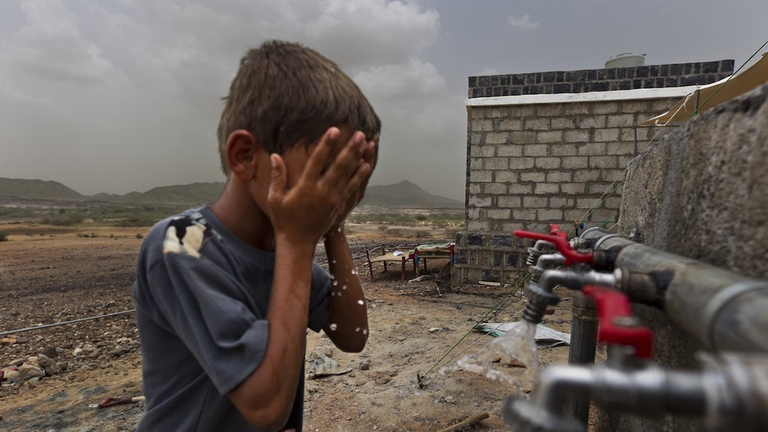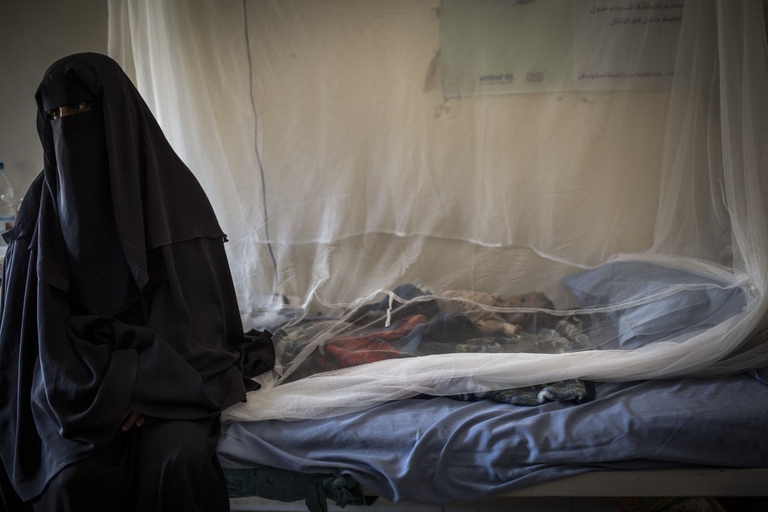
Costa Rica celebrated its first same-sex marriage when two women, Alexandra Quiros and Dunia Araya, celebrated their wedding: an “extraordinary moment”.
NGO Action against Hunger explores the link between hunger and conflicts, in figures. A vicious circle that must be broken.
War creates hunger and hunger unleashes conflicts. The alarming figures of Action Against Hungers’s report Hunger and Conflict confirm a very tight and devastating bond between the two dynamics. If governments and supranational institutions fail to reduce conflicts and guarantee the compliance with the principles established by international humanitarian law, the number of hungry people will grow further, undermining the progress that has been painstakingly achieved over the last fifteen years.
Action against Hunger’s experience in about 50 countries across the world has provided numerous evidence of the bilateral relationship between hunger and conflict: on the one hand wars destroy markets and livelihoods and produce massive displacements of population, which trigger a high risk of food insecurity; on the other, food insecurity and competition for natural resources or food has been the source of many conflicts currently active worldwide.
The figures of this relationship speak for themselves:
Violence – especially in contemporary conflicts that massively affect civilians – causes mass displacements of people who flee with what they can, abandoning their livelihoods and concentrating in places with scarcity of water and precarious sanitation facilities, where they depend on humanitarian aid to survive. The number of people displaced by violence has doubled between 2007 and 2015 and it is estimated that a displaced person spends more than 17 years on average in refugee camps or host populations, often creating tensions and competition for natural resources or occupation.
Read also: Nourish your soul. World Food Day 2018 on 16 October aims for #ZeroHunger
In wartime, crops are abandoned, sowing and harvesting periods are skipped, supplies to the markets are interrupted, as well as the transport and supply routes: all of this impacts significantly the population. In turn, rising food and commodity prices have triggered many of the current conflicts. In contexts such as Sahel region, rising food prices, drought and competition for increasingly dry pastures have created tensions between pastoral populations, leading to actual conflicts.
Moreover, there is a side to this problem that we must not forget: the growing use of hunger as a weapon of war, through the systematic siege of civilians, the attack on basic water and livelihood infrastructure and the blocking of humanitarian aid. This is a growing trend in conflicts that are increasingly fought by armed groups with few military resources, who find in hunger a very cheap and viable weapon of war.
Action against Huger report analyses 13 cases in areas and countries in conflict, including some particularly significant ones, such as Yemen, where the civil war from 2014 until today has caused more than 16 000 victims and where 22 million people depend on humanitarian aid. Unfortunately, access to basic care, such as food or medicine, is complex and limited due to the embargo and restrictions imposed on the country. It is therefore very difficult to reach all the victims with humanitarian aid and humanitarian corridors aren’t respected.
Bra and her mother Salouna, arrived in the stabilization center of Hayis after several months of walking, since they escaped the clashes in their city, Taiz. Bra is 9 months old and weighs only 4 kilos, the weight of a newborn. “It was very difficult to find food and that’s why we came here. But we need help,” Saloua whispers. Half of the Yemeni children suffer from chronic malnutrition: they don’t have access to the nutrients their bodies need to grow, reducing their ability to learn and prosper.
Malnutrition directly threatens people’s lives, also weakening their immune system. In Yemen, people die from commonly treatable diseases such as cholera or pneumonia. Lactating mothers, children and the elderly are particularly vulnerable.
Action against Hunger’s 320-strong team is working with extreme difficulties in Yemen: after almost four years of conflict and despite all efforts to end displacements, hunger and diseases, Yemen remains the theater of the worst humanitarian crisis in the world.
On 24 May the United Nations adopted Resolution 2417, calling on all parties in conflict to comply with International Humanitarian Law, which prohibits attacks on civilians and critical civil infrastructures – including farms, markets, water systems and other essential elements to produce and distribute food. The resolution also urges the Secretary General to alert the Security Council in those contexts where a conflict threatens food security.
We hope that this resolution will bring political commitment to the highest levels, avoiding the deterioration of serious food crises, because in order to break the vicious circle between conflict and hunger it’s necessary a global approach that guarantees a strict adherence to international humanitarian law, taking responsibility for non-compliance with it and mobilization at the highest levels when hunger is used as a weapon of war. We hope that this resolution will avoid the deterioration of serious food crises. Above all, we hope that to these statements will follow real actions.
Siamo anche su WhatsApp. Segui il canale ufficiale LifeGate per restare aggiornata, aggiornato sulle ultime notizie e sulle nostre attività.
![]()
Quest'opera è distribuita con Licenza Creative Commons Attribuzione - Non commerciale - Non opere derivate 4.0 Internazionale.
Costa Rica celebrated its first same-sex marriage when two women, Alexandra Quiros and Dunia Araya, celebrated their wedding: an “extraordinary moment”.
On top of a 2.4 million dollar compensation, the indigenous Ashaninka people will receive an official apology from the companies who deforested their lands in the 1980s.
From Italy to the United States, workers in the logistics and delivery sectors are protesting to demand better sanitary conditions to protect themselves from Covid-19.
The pandemic and its restrictions are affecting everyone, without exceptions. However factors like housing, income inequalities, gender, access to technology and working conditions are influencing how people experience the health crisis.
In the midst of India’s coronavirus lockdown, two dozen people lost their lives in a desperate bid to return home: migrant labourers forced to leave the cities where they worked once starvation began knocking at their doors.
Apple, Dell, Microsoft and Tesla are among the tech companies named in a lawsuit brought in the US by the families of children killed and maimed in cobalt mining activities in the Democratic Republic of Congo.
We, the people is Survival’s 2020 calendar, which features the winners of the photography contest showcasing images of the world’s indigenous peoples.
Un violador en tu camino – the rapist is you – is an anthem protesting the impunity of gender-based violence. It began in Chile and has become a global flash mob, bringing people to the streets and resonating all over the world.
Abiy Ahmed was awarded the Nobel Peace Prize for reaching peace with Eritrea. Yet, Indigenous groups in Ethiopia’s Lower Omo Valley have been abused by security forces, a fact that the prime minister must address, says the Oakland Institute.
